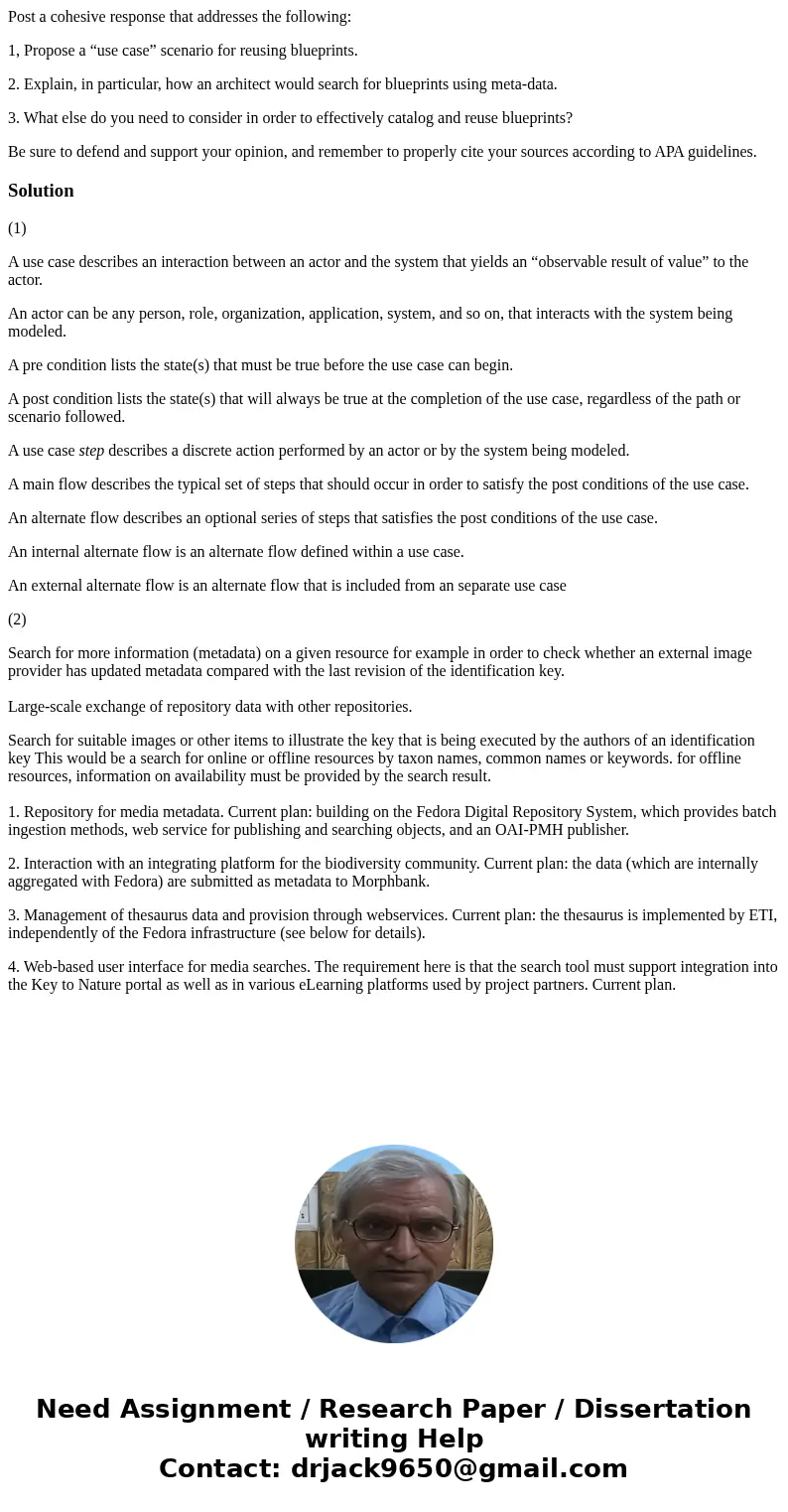Post a cohesive response that addresses the following 1 Prop
Post a cohesive response that addresses the following:
1, Propose a “use case” scenario for reusing blueprints.
2. Explain, in particular, how an architect would search for blueprints using meta-data.
3. What else do you need to consider in order to effectively catalog and reuse blueprints?
Be sure to defend and support your opinion, and remember to properly cite your sources according to APA guidelines.
Solution
(1)
A use case describes an interaction between an actor and the system that yields an “observable result of value” to the actor.
An actor can be any person, role, organization, application, system, and so on, that interacts with the system being modeled.
A pre condition lists the state(s) that must be true before the use case can begin.
A post condition lists the state(s) that will always be true at the completion of the use case, regardless of the path or scenario followed.
A use case step describes a discrete action performed by an actor or by the system being modeled.
A main flow describes the typical set of steps that should occur in order to satisfy the post conditions of the use case.
An alternate flow describes an optional series of steps that satisfies the post conditions of the use case.
An internal alternate flow is an alternate flow defined within a use case.
An external alternate flow is an alternate flow that is included from an separate use case
(2)
Search for more information (metadata) on a given resource for example in order to check whether an external image provider has updated metadata compared with the last revision of the identification key.
Large-scale exchange of repository data with other repositories.
Search for suitable images or other items to illustrate the key that is being executed by the authors of an identification key This would be a search for online or offline resources by taxon names, common names or keywords. for offline resources, information on availability must be provided by the search result.
1. Repository for media metadata. Current plan: building on the Fedora Digital Repository System, which provides batch ingestion methods, web service for publishing and searching objects, and an OAI-PMH publisher.
2. Interaction with an integrating platform for the biodiversity community. Current plan: the data (which are internally aggregated with Fedora) are submitted as metadata to Morphbank.
3. Management of thesaurus data and provision through webservices. Current plan: the thesaurus is implemented by ETI, independently of the Fedora infrastructure (see below for details).
4. Web-based user interface for media searches. The requirement here is that the search tool must support integration into the Key to Nature portal as well as in various eLearning platforms used by project partners. Current plan.

 Homework Sourse
Homework Sourse